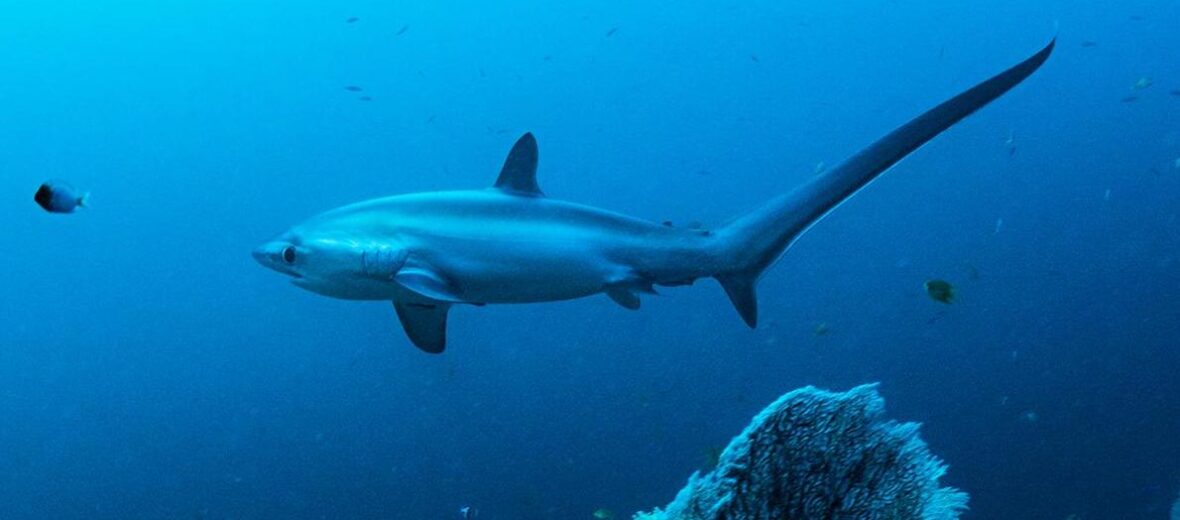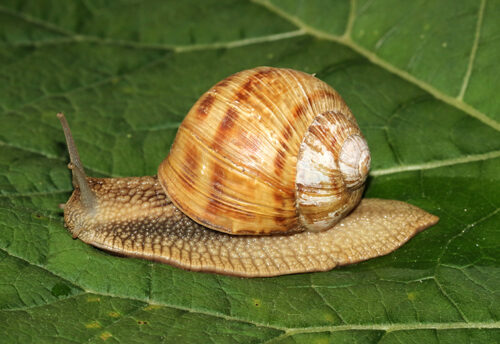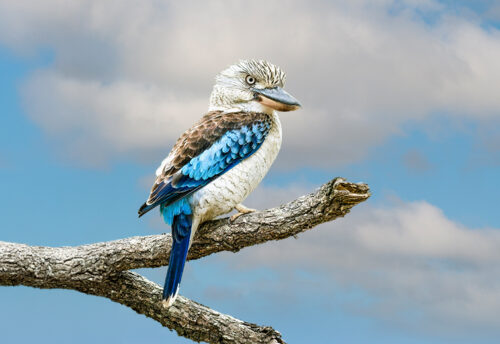
Unique in their appearance, the thresher shark stands out among all other sharks in terms of their main feature… their huge tail. The tail of a thresher can equal the length of their entire body! But what is that tail used for, if not for just swimming? These sharks prefer deeper water as adults and shallow water as juveniles. They can be found in the Pacific, Atlantic, and Indian Oceans; to name a few. Threshers prefer temperate and subtropical climates. 2 subspecies are listed as Vulnerable and 1 Endangered by the IUCN.
First the Stats…
Scientific name: Alopias
Weight: Up to 440 lbs.
Length: Up to 20 feet, including their tail
Lifespan: Up to 50 years
Now on to the Facts!
1.) There are 3 known subspecies of thresher: The pelagic thresher, bigeye thresher, and the common thresher. Could there be more out there?
2.) They prey on mackerel, Long Tom, bluefish, lanternfish, herring, pelagic invertebrates, and squid.
3.) Threshers are overfished for their hide, big fins, liver oil, and flesh. They are also caught in long lines and as bycatch (caught in fishing nets meant for other fish). This is taking a heavy toll on their numbers.
4.) Aristotle named these fish after foxes because they are smart and clever.
5.) Thresher sharks use their tail, in part, to lure prey nearby. Then they slap their victim(s) with their tail, repeatedly (like the 3 Stooges), till their prey is stunned, unconscious, or dead and swim back around to feast.
But wait, there’s more on the thresher shark!
6.) Like only a few shark species, they are endothermic (warm blooded).
7.) Due to their strength, they are able to swim at speeds of up to 30 mph.
Did you know…?
Thresher sharks have been recorded whipping their tails at up to 80 mph!
8.) Females are ovoviviparous (eggs develop inside of mom’s body, however, they aren’t attached by a placenta).
9.) After 9 months of gestation (pregnancy) the female gives birth to 2 – 7 live pups.
10.) Threshers have only been linked to 1 recorded attack on a human and that attack was provoked by grabbing the shark’s tail. Typically, they will flee from humans.
Now a Short Thresher Shark Video!
Also, check out the Critter Science YouTube channel. Videos added frequently!
Want to suggest a critter for me to write about? Let me know here.



